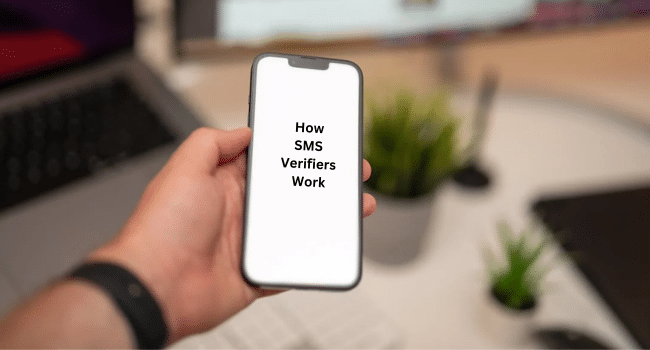Table of Contents
SMS verification is a common method used to confirm a user’s identity when signing up for an application or online service. As more companies adopt this system, it’s helpful to understand how it works to complete the verification process smoothly. In this article, you’ll get a brief overview of SMS verification, explaining the key points of how the system functions.
How SMS Verification Works
SMS verification involves linking a phone number to an account to be created. When you enter your number, the program will then text a one-time passcode to that number on the specific mobile device. Direct to your personal phone, companies can alert you through this automatic process of transactions with account details. It also makes sure they have your real and active phone number. A verification code is a random number generated by the system and sent through text back to the user’s chosen phone number. The user receives an SMS code and is then prompted to provide it in the verification field in the website or applications so as to confirm that the user controls the old telephone number for verification.
The Role of One-Time Passcodes (OTP) in Identity Verification
The SMS passcode is received, and through a short process, the account is required to be verified by the actual PIN, or OTP sent to the phone number used to open the account. The code is generated at random and will be valid for some amount of time after issuance to make it more secure. Now we prove that you really did have the mobile device with those numbers. It verifies your identity while registering and ends the process of creating a fake account with the number. That means that the OTP is usually only good for a very short time, say in some cases less than a minute to make the chances of an attacker intercepting and using the OTP very little.
Device-Specific Security Features
Unlike traditional SIM card or phone number-based verification, SMS codes are tied directly to the device itself. This means that if you attempt to verify using a different phone, you won’t receive the passcode, even if your number is registered. This device-specific feature helps prevent SMS spoofing, where an attacker intercepts codes sent to your number on another phone. The passcodes are linked to the device’s hardware identification, such as the IMEI number, making it difficult for attackers to spoof identities across different devices.
Phone Number Validity Verification
It also verifies that the given phone number actually works! Preventing fake numbers from being used, a key step is the verifier ensuring the number is in an active mobile network. The system also looks at other things, like having duplicate phone numbers, to prevent a single number from being used to create multiple fake accounts. The use of the same number raises risks with many accounts; the verifier can verify if there is any other account using the same number. Full account activation requires the user to input a verified phone number for the user to receive and input the SMS code the system sends to the number as a verification token.
Alternative Verification Methods
Companies offer backup verification methods if you’re unable to use text messages during sign-up. One alternative is using an auto dialer, which can call a phone number in your preferred language to ensure that the number is verified successfully.
These are definitely methods of choice, but SMS verifier is still one of the most efficient ways you can use today to directly reach your personal device as fast as possible and at the highest protection. SMS verification not only confirms user identity instantly but also provides immediate validation. This is why SMS is frequently used for verification; it offers convenience and reliability, reducing the risk of unauthorized access while enhancing the user experience. As companies explore various options, they cannot overlook the importance of having an effective SMS verification system.
Conclusion
SMS verification is the text message feature that certifies that you are the owner of a certain phone number. Due to the fact that they can send random codes to the device and receive pin inputs from the user, companies can guarantee the identities of users and protect their accounts. The possession of knowledge of the following aspects, like connection numbers, inputs of passcodes, specialist devices, and backup procedures, will alleviate the operations involved in the use of this far more often used technique of verification.
Image source Pexels
